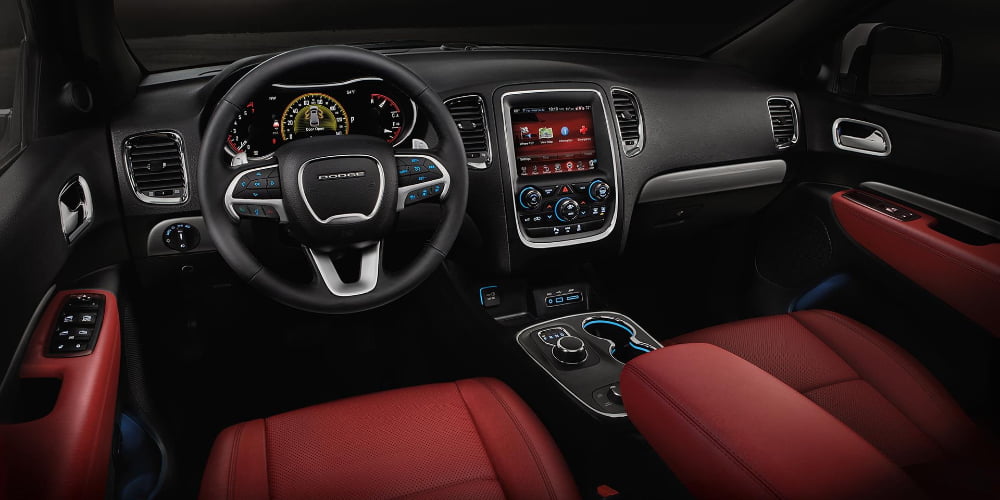Having a 2015 Dodge Durango check engine light can be a scary experience. There are many different causes for the light to come on, and it can be difficult to determine exactly what the problem is. But there are a few things you can do to get the light to go off.
2015 Dodge Durango Check Engine Light: Spark Plugs
Choosing the right spark plugs for your Dodge Durango is important. They can determine the overall health of your engine. When the spark plugs fail, the engine will struggle to start. This can result in poor fuel economy and frequent trips to the gas station. If you think your Durango isn’t running properly, you need to visit a certified mechanic to have the spark plugs replaced.
Spark plugs are used to ignite the air-fuel mixture in the combustion chambers of a gas engine. A small spark is generated by the plug, which is then sent to the ignition coil for further energization. The plugs can be made of copper or platinum. They should be replaced every 30,000 miles or so.
A spark plug’s tip can be made of platinum or iridium. Platinum is more durable than copper. The tip can last for as long as 100,000 miles.
A faulty spark plug can cause engine misfire and knocking noises. It can also damage the catalytic converter. If you have a 2015 Dodge Durango check engine light, this is a sign that you should get your spark plugs replaced.

2015 Dodge Durango Check Engine Light: Mass Airflow Sensor
Whether you drive a 2015 Dodge Durango or another model, it’s important to know when you need to replace your mass air flow sensor. This sensor, a vital part of your intake system, helps your vehicle’s engine perform properly by measuring the amount of air that is entering your engine. It’s also important for adjusting your engine’s altitude, so that it can run at its best.
A bad mass air flow sensor can cause a number of problems, from a rough idle to reduced fuel mileage. Some of the most common symptoms include a jerking sensation, erratic idling, and a loss of power. A faulty MAF sensor could also cause damage to your catalytic converter or spark plugs.
Your engine control unit (ECU) uses data from the MAF sensor to calculate the optimal amount of fuel to be injected into your engine’s cylinders. When the sensor fails, it’s not able to accurately calculate the right amount of fuel to be injected into your cylinders, which can cause improper combustion processes.

2015 Dodge Durango Check Engine Light: Catalytic Converters
Whether you have a 2015 Dodge Durango or you are simply interested in learning more about the part, there are many things to know about the catalytic converter. The converter is the part of the exhaust system that reduces pollutants released into the air. These include Nitrogen oxides, which are dangerous to living organisms.
Catalytic converters have become more efficient from an exhaust flow perspective. They can last up to 100,000 miles. Nevertheless, if a converter is damaged, it can significantly affect the performance of the vehicle.
If you notice any of the symptoms of a clogged catalytic converter, it’s a good idea to visit a mechanic for repair. The clogged converter can affect your fuel economy and performance, and it can also cause rattling noises. You might also notice an unusual exhaust gas odor.
The catalytic converter is a crucial part of the exhaust system. It reduces harmful emissions to meet federal regulations. If a converter is damaged, it will increase the amount of harmful emissions that are released at the tailpipe.
2015 Dodge Durango Check Engine Light: Vacuum System
Several systems in your vehicle rely on the vacuum system to function correctly. For example, your power steering, climate control and power brakes all require the engine’s vacuum to work. If you have a leak, these systems will be affected. This can cause your engine to stall, or even have a rough idle. If you have a check engine light, it is possible that the vacuum system is the problem.
There are a number of ways to troubleshoot vacuum leaks. The first step is to locate a vacuum system diagram, which is easily found under your hood. The diagram can be found in your car’s manual, or you can purchase it at your dealer service department. The diagram will tell you where the vacuum line is located, and what vacuum-controlled devices are used.
If you can’t find a vacuum diagram, you can still troubleshoot vacuum leaks by visually inspecting the vacuum hoses, gaskets and valves. A good way to do this is to use a mechanic’s stethoscope. This will amplify the sound in your ear, making it easier to detect leaks.
